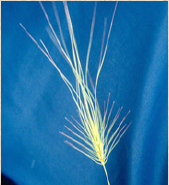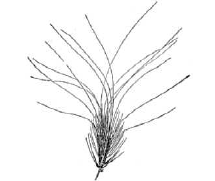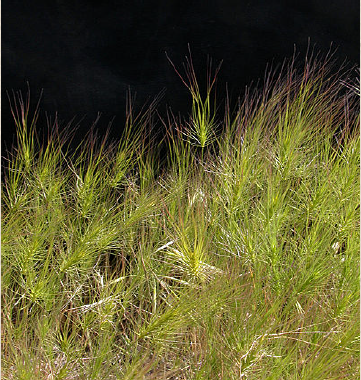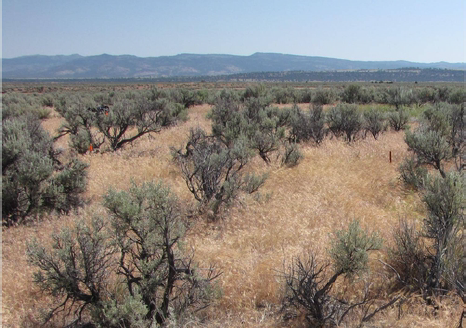Why is Medusahead a Threat
Medusahead is an introduced annual grass from the Mediterranean area of Eurasia. This invasive weed grows on at least 6,000 acres in Paradise Valley, Nev., where it occupies disturbed areas but can also invade optimal habitat used by mule deer, sage grouse, other wildlife and livestock. The plant has no forage or habitat value for either wildlife or livestock, and it is avoided by all animals. Once medusahead becomes abundant it can outcompete desired species, reducing habitat quality. Large dense stands have virtually no value for wild or domestic animals. Also, medusahead is very flammable and increases the risk of a large catastrophic wildfire. After a fire, medusahead can re-establish rapidly and form a near monoculture, effectively eliminating habitat for most species.
Medusahead Growth Characteristics
Germination occurs from the fall through spring months. Rapid vegetative growth occurs in the spring, effectively reducing available soil moisture to competitors. Medusahead tends to mature later than cheatgrass, Sandberg’s bluegrass and possibly bottlebrush squirreltail, which permits it to further secure (store) soil resources. The plant has a lighter colored green hue than most other grasses during spring growth and a light tan color upon maturity. Once Medusahead matures, the seedhead has very stiff awns (tail-like appendages). The awns near the base of the seedhead are short, compared to the awns near the seedhead’s tip. Medusahead produces hundreds or more seeds per plant with germination rates well over 90 percent. Plant density can range up to 2,000 plants per square foot. Medusahead has a high silica content which slows its decomposition. Once Medusahead becomes well established, it forms dense stands that develop a thick mat of litter, often reaching depths of 5 inches or more. This mat hinders more desired plants from germinating and/or establishing. Medusahead’s litter layer is an extreme fire hazard and stores nutrients needed by other plants for their growth.


OR Dept Ag (left) and USDA Plants Database (right)
What Should I Do if I Think I Found Medusahead
Avoid spreading the seed. Do not walk or drive through the infestation. If possible, identify the location on a map, with GPS coordinates, or write down the best description possible. If you collect a plant sample, only do so if you can securely store it in a closed bag or container. Uncontained transport is an easy way to spread seed to a new location. If you are in Humboldt County provide this information to one of the following organizations:
- U.S. Forest Service, Paradise Valley Range Station or the Santa Rosa Ranger District Office, 1200 East Winnemucca Blvd (775-623-5025)
- Bureau of Land Management, 5100 East Winnemucca Blvd, Winnemucca, NV (775-623-1500)
- University of Nevada Cooperative Extension, 1085 Fairgrounds Road, Winnemucca, NV (775-623-6304)
- Paradise Valley Weed Control District (Daryl Riesgard, (775-578-0096)


USDA ARS (left) and Joe DiTomaso, UC Davis (right)
For other areas in Nevada, contact the closest office of the Bureau of Land Management for BLM administered lands, U.S. Forest Service for Forest Service-administered lands, or Tina Mudd (775-353-3670) at the Nevada Department of Agriculture.


